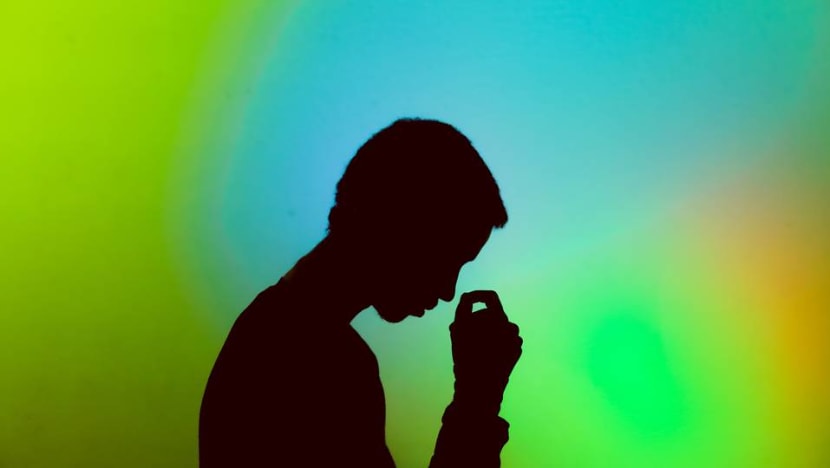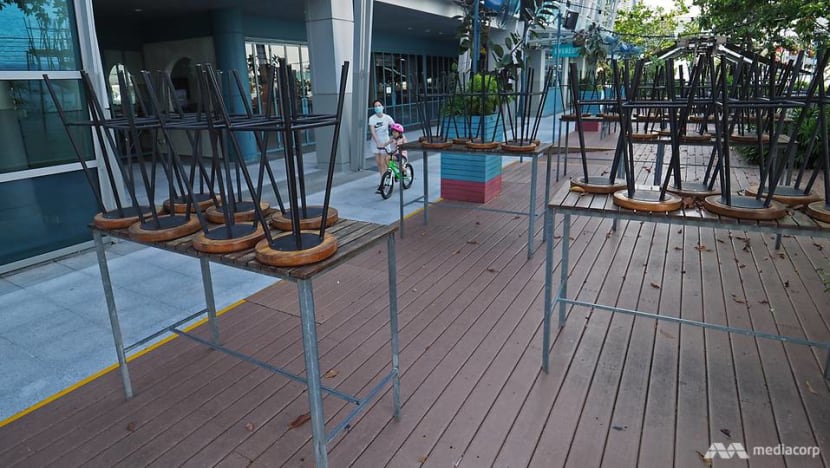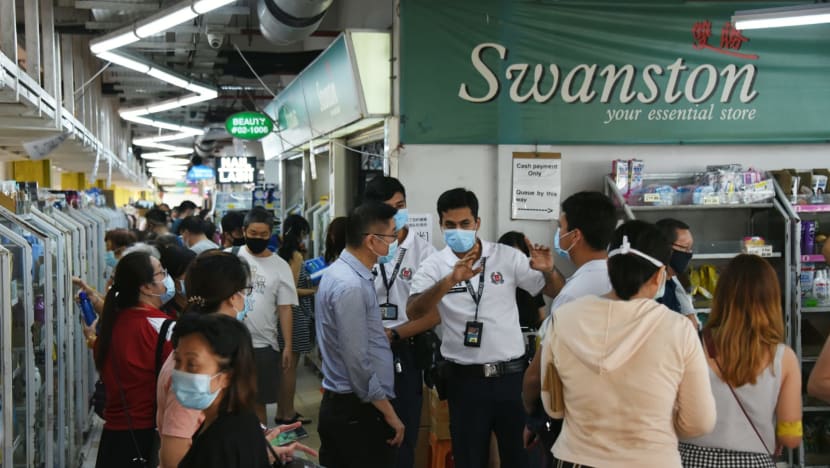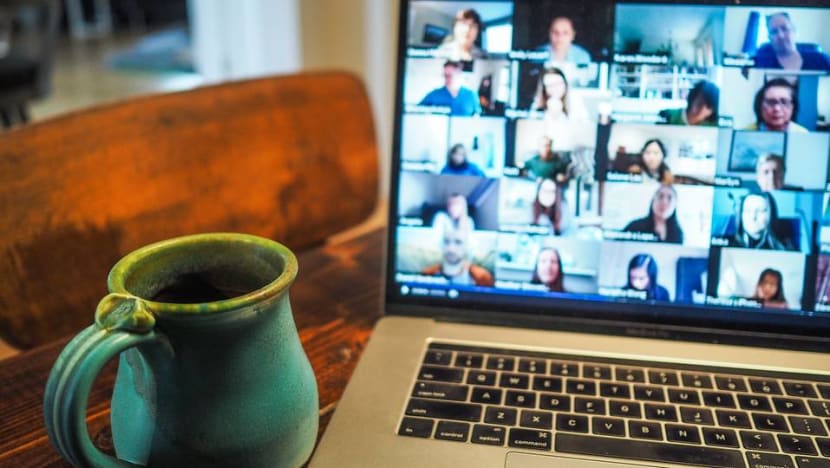commentary Commentary
Commentary: The introverts among us can’t deal with Phase 2 yet
After almost three months of stasis, Singapore families are cautiously re-emerging from homes but that process has been surprisingly challenging for introverts, says Cherie Tseng.

Many people settled into a new rhythm during COVID-19, if only out of resignation. (Photo: Gift Habeshaw / Unsplash)
SINGAPORE: So far, 2020 has unfolded like “a choose your own adventure” gone awry.
From the first rash of COVID-19 cases in January to the Ides of March, there were added distancing, isolation rules, travel advisories, new policies and harsher penalties.
Right after April Fool’s Day, we read the signs and collectively braced for DORSCON Red. Instead, we learnt of a new interim stage – circuit breaker.
WFH, HBL, CB, C19 - all became commonplace short forms, as if we didn’t already have enough abbreviations in our local vocabulary, while digitalisation saw an uptake that it had never seen before. Zoom became a verb.
LISTEN: Entering Phase 2: What's behind rules on gatherings, dining, weddings and more?
READ: Commentary: The coronavirus has made all of us OCD
The whole nation retreated into their homes with much reluctance but armed with a deep desperation to do what needs to be done. The streets are suddenly quiet. Nature catches her breath; humankind holds theirs.
OUR CATERPILLAR LIFE
Life during circuit breaker felt like a B-grade reality TV show with a sequel that continued into Phase 1.
My 10-year-old son likened us to feasting caterpillars: We occupied ourselves with a fervent slew of activities to plum our bellies, feed our minds and fill our love tanks.
Our inner Gaia came out to play: We fed our sourdough starters, grew our Scooby babies and filled our Instagram with a bevy of encouraging messages to try and drown out the real and present miasma of worry and disquiet.
Students and working adults alike found themselves with a new-found exhaustion from what psychologists call identity switching: Changing from one’s work persona to our home one.
It happened every time a child enters their parent’s work zone while they are on a web call or when mum popped in to check if junior was making progress on his schoolwork.
And whether we liked it or not, we coped and tolerated. Or tried to. Moulting like growing caterpillars do, to better fit this “new normal”. I hate that phrase, for nothing about it feels normal.

For many, we settled into a new rhythm, if only out of resignation. The unwilling chrysalis.
SPREAD YOUR WINGS AND FLY?
Then, after almost three months of stasis, we are now given permission to cautiously re-emerge. According to reports, a good slice of Singapore flocked outside as soon as the clock struck midnight on Jun 19 and Phase 2 commenced.
READ: Commentary: Making a trip to the clinic is not the only way to get medical treatment during COVID-19
In the weekend that followed, Singaporeans took to the streets. Families and friends reunited.
We could gather over a meal. Parks were teeming with people again, malls packed. It was like a reanimation of Singapore with a slight dusting of Frankenstein – we all looked a little different, moved and looked a little awkward with our masked faces.
But life was returning. Mostly.
Yet, strangely, for introverts like me and many others, there has been an odd, unexpected reluctance to re-emerge. Quite like a butterfly in mid-struggle to free itself but finding it hard to muster up the necessary chutzpah to get the job done.
It surprised me too, actually, that I found myself lacklustre with making plans, deferring dinner meet-ups and coffee catch-ups.
When I finally went for a much overdue haircut, the constant chatter around me gave me a headache. My husband and I drove out to do an errand run, only to turn back when we saw the teeming crowds – masked seniors and toddlers, too, out in force.
SHELTER IN PLACE
Technology Review framed it well when they cautioned that many of us coped by trying to virtually re-create our lives on apps and programs that were never designed to host our work and social lives all at once.
“The result,” they share, “for introverts, extroverts, and everyone in between, is the bizarre feeling of being socially overwhelmed despite the fact that we’re staying as far away from each other as we can.”
I concur. I really took to being able to conduct meetings and even attend birthday parties and weddings virtually – the option to log in and celebrate was a small panacea I never knew my introverted soul needed.
Plus, I relished this, albeit enforced, expanse of time to pause.

My experience is not uncommon, as Dr Kim Lian Rolles-Abraham, a senior clinical psychologist practicing at Better Life Psychological Medicine explained on a recent radio talk show.
“Some people are genuinely homebodies who enjoy the comforts, familiarities and conveniences of their home. They don’t want or need to go out, especially during this season, not because they are afraid or anxious to, but because they prefer not to.”
A CAUTIONARY TALE
Still, she cautions, there is a need for us to not confuse introversion with anxiety-fuelled avoidance. For some, that anxiety could be pre-existing, or developed through this COVID-19 season.
“People are anxious when something in their life changes. With this virus outbreak, we have, as a society, gone through many changes and upheavals and have to deal with a lot of uncertainty and loss of control.”
Most of that apprehension, perhaps, is from an overwhelming sense of caution. We have been repeatedly told, that like a satirical Tom Clancy novel, that COVID-19 is still a real and present danger.
READ: Commentary: Here's how our elderly can better protect themselves against COVID-19
“People are aware that more contact could increase community transmission of cases. This internalisation of social responsibility plays into us wanting to keep being in public spaces to a minimum,” opines Dr Laavanya Kathiravelu, Assistant Professor of Sociology at the Nanyang Technological University, when I queried her on COVID-19 social behavioural patterns on a call to valiantly resume plans to set up a playdate for our toddlers.
“In such a mood of heightened uncertainty and fear, even walking from the parking lot to the office, or doing a daily commute, might be perceived as a potential threat to one’s health, and an unnecessary risk to take,” echoes Dr Dawn Chow, a Singaporean Research Assistant Professor at The Open University of Hong Kong when sharing with me about her ongoing study on the matter.
A NEW PATTERN
Still others, prefer stasis, perhaps having internalised the new status quo.
“Our weekly pulse surveys reveal that while they miss the in-person interactions working in a physical office accords, many do not mind continuing with work from home arrangements as it saves them the commute, they get to work in loungewear, and for the working parents, being present and available for the children - little luxuries they never thought that they were able to afford before,” Jee Kinnear-Ong, a veteran client services director at Randstad Sourceright, shared with me during our recent conversation.

A survey by HRMAsia reports that 80 per cent of respondents would like to continue to work from home. A Straits Times article intimates the same with 9 in 10 preferring to do so at least some of the time.
Most cite saving time commuting and gaining a little more work-life balance as reasons.
Realistically, though, there is a disjunct. Most of the respondents admit they are less productive when working from home. Today Online reports that almost one in two workers are far less productive when working from home.
READ: Commentary: Pay attention to your back when working from home
The math doesn’t quite pan out, even if this is something companies would undoubtedly need to referee.
The process of a butterfly emerging from its chrysalis is known as eclosion, the French word for hatching. It emerges, hangs nearby for a while and begin the process of expanding and drying its wings before flight is possible.
And likewise, for many of us, this unexpected reluctance to re-emerge feels like some sort of human version of eclosion.
BOOKMARK THIS: Our comprehensive coverage of the novel coronavirus and its developments
Download our app or subscribe to our Telegram channel for the latest updates on the coronavirus outbreak: https://cna.asia/telegram
Cherie Tseng is Chief Operations Officer at a local fintech company, a mother of three and editor with The Birthday Collective.












